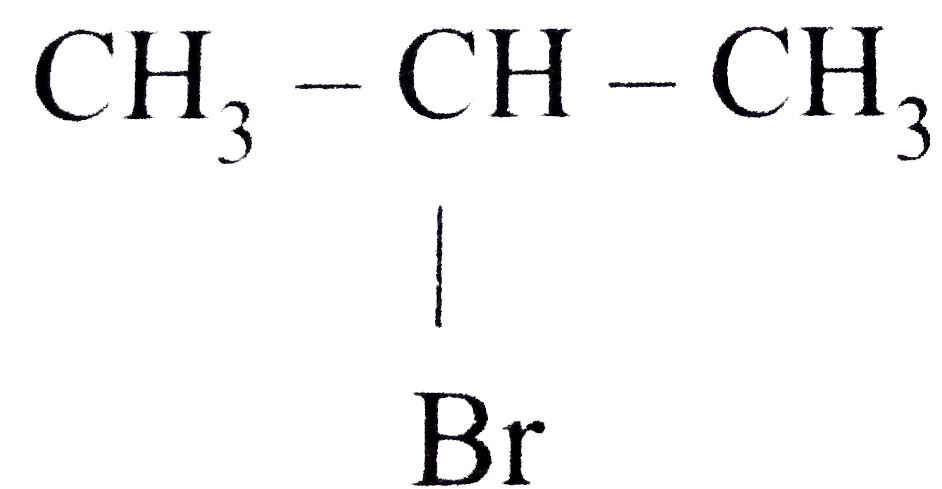Consider the following reaction CH3−CH=CH2Br2/NaCl−−−−−−→ Product of the reaction will be
Only 1,2 - dibromopropane
Only 1- bromo -2- chloropropane
Only -2- bromo -1- chloropropane
Mixture of 1,2 dibromopropane and 1 - bromo -2- chloropropane
The correct Answer is:D
To solve the question regarding the reaction of propene (CH3-CH=CH2) with bromine (Br2) in the presence of sodium chloride (NaCl), we can follow these steps:
1. Identify the Reactants: The reactants are propene (CH3-CH=CH2) and bromine (Br2) in the presence of sodium chloride (NaCl).
2. Understand the Reaction Mechanism: The double bond in propene is electron-rich, making it susceptible to electrophilic attack. The bromine molecule (Br2) will undergo homolytic cleavage to form two bromine radicals (Br•).
3. Formation of Bromonium Ion: When bromine approaches the double bond, one of the bromine atoms will form a bond with one of the carbon atoms in the double bond, resulting in the formation of a bromonium ion. The other bromine atom will carry a positive charge.
- Intermediate: CH3-CH(Br+)-CH2
4. Nucleophilic Attack: The bromide ion (Br-) that is generated from the cleavage of Br2 will now act as a nucleophile. It will attack the more substituted carbon of the bromonium ion from the opposite side (anti-addition), leading to the formation of a vicinal dibromide.
5. Product Formation: The major product formed from this reaction will be 1,2-dibromopropane (CH3-CHBr-CH2Br) due to the anti-addition of bromine across the double bond.
6. Alternative Product Formation: In the presence of NaCl, the chloride ion (Cl-) can also act as a nucleophile. If Cl- attacks instead of Br-, we can form 1-bromo-2-chloropropane (CH3-CHCl-CH2Br) through a similar anti-addition mechanism.
Summary of Products:
- Major Product: 1,2-Dibromopropane (CH3-CHBr-CH2Br)
- Minor Product: 1-Bromo-2-chloropropane (CH3-CHCl-CH2Br)
- Major Product: 1,2-Dibromopropane (CH3-CHBr-CH2Br)
- Minor Product: 1-Bromo-2-chloropropane (CH3-CHCl-CH2Br)
Similar Questions
Knowledge Check
Ph−CH2−CH∣D−CH3Br2/hv−−−−→
Product of the above reaction will be :ADiastereomersBRacemic mixtureCMesoDConstitutional isomersBr−CH2−(CH2)2−CH2−Br+CH3NH2→ Product of the reaction is :
A B
B C
C D
D
Product formed in the following reaction is CH3CH2CH(OH)CH3H2SO4−−−→
View SolutionConsider the reaction :
CH3CH2CH2Br+NaCN→CH3CH2CH2CN+NaBr
This reaction will be the fastest in :
View SolutionConsider the reaction :
CH3CH2CH2Br+NaCN→CH3CH2CH2CN+NaBr
This reaction will be the fastest in :
View SolutionIdentify the set of reagents / reaction conditions 'X' and 'Y' in the following set of transformations.
CH3−CH2CH2BrX−−→ProductY−−→

View SolutionIdentify A, B and C in the following reactions.
CH3CH(CH3)CONH2Br2,NaOH−−−−−−→AHONO−−−→Br2BO−−→C
View SolutionIdentify the product in the following reactions.
CH3COOH + NaOH →
View Solution
